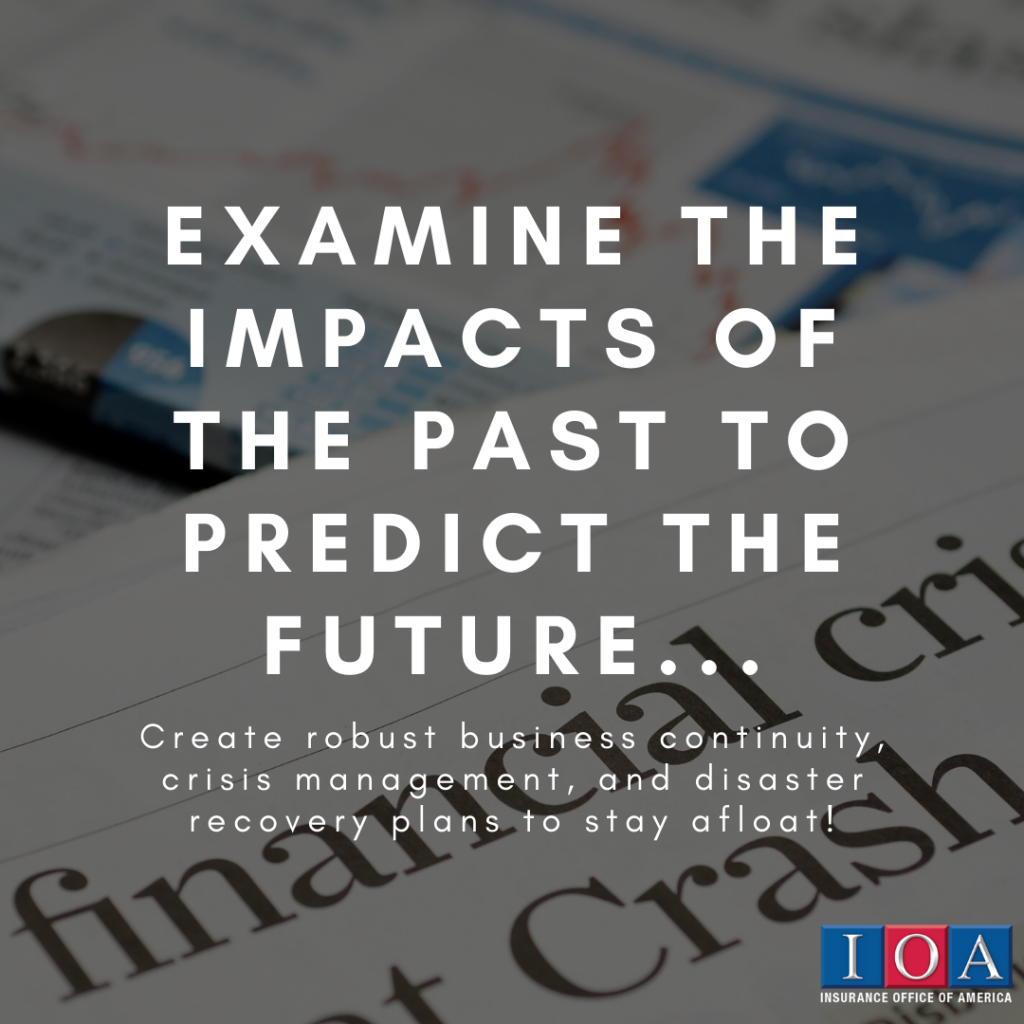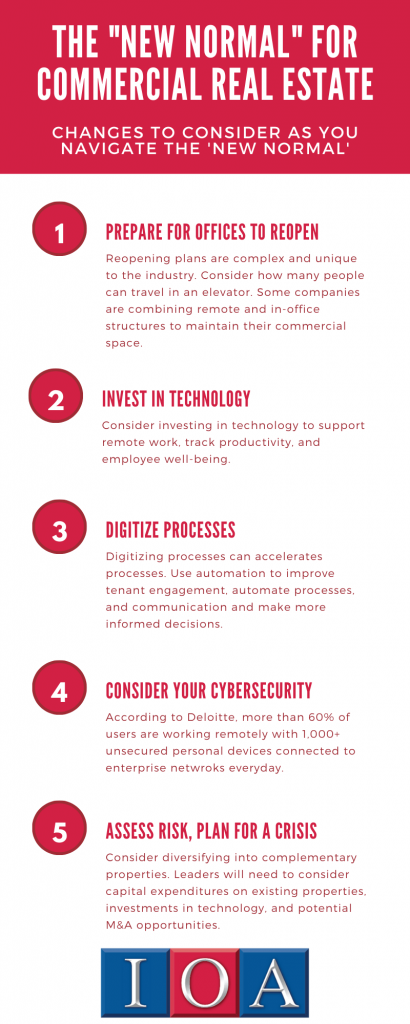
From the perspective of Commercial Real Estate, if we look at the effects of past pandemics (SARS, EBOLA, MERS) and those of global terrorism attacks, we can see that, despite initial shockwaves, CREs have suffered relatively short term impacts. The 2008 recession and those events historically that were economically based, like the tech bubble, took longer to recover from than the event-based attacks or pandemics. One of the reasons for this quicker recovery post-disaster than post-recession or economic crisis was because the economy was on stable footing before the pandemics and disaster events and was therefore able to regain more stable footing after the crisis had passed.
The Commercial Real Estate industry has historically lagged behind the wider economy. This lag is behind by about 6 months in the ramifications from events. In the case of COVID, that effect has come much faster.
Quarantine, forced closures, the need for social distancing, massive loss of revenue, and widespread layoffs already decimated CRE sectors. Among these CRE sectors include retail, casinos, hotels, and recreation such as movie theatres and malls.
Office space looks to be in trouble as well.
“Most companies have now realized that they can work as effectively remotely, and some employees actually like it.” According to San Diego based Hughes Marino.
Despite these plans for a reduction in the need for office space, REIT’s, Real Estate Investment Trusts, that own office buildings nationwide are still collecting roughly 90 percent of rent from tenants — even though employees are largely working from home.
“On the other hand, you have companies that want their people in the office,” he continued. “With social distancing and the new way that they have to occupy office space, they may have to take a little more space to accommodate all of their people. So it’s too early to tell.” Said Eric Northbrook of Voit Real Estate
Since the pandemic began most REITs focus on preserving cash. Some are delaying or suspending dividend payments; others are cutting dividend rates and giving a majority of the dividend as stock instead of cash. Companies have also drawn on their credit facilities and started to explore refinancing options. They have established new or expanded facilities, and debt offerings to maintain liquidity in the short term to midterm.
On the granular level, some owners in hospitality and retail have closed properties to help slow COVID-19’s spread. These closures also help save money when their guests and customers are unable to engage with them.
Residential owners closed shared amenities and have rethought offerings such as gyms, pools, and rooftop lounges. With the sharp rise in unemployment, tenants are asking for rent abatements and landlords are in many cases negotiating rental payments. Many retail tenants have served force majeure notices to their landlords. Force majeure references unforeseen circumstances and government-imposed closures.
How should CRE’s prepare for the next phase, the “NEW NORMAL”?
- Prepare for the reopening of offices and business spaces. Plans for reopening are complex and unique. Consider elevators, how many people can get to their floors using stairs instead? How many people can be transported up and down in a given period of time? Some companies will combine remote and in-office structures maintaining their commercial space while supporting remote work.
- CREs can consider investing in technology to support remote work, track productivity, and employee well-being.
- It may not all be bad. Digitizing processes can accelerate processes companies knew they needed but were reluctant to implement. Warehouses across sectors are using automation to meet increased demand with great success. CRE’s can look to automation to improve tenant engagement, automate processes, and communication and make more informed decisions.
- Cybersecurity and data privacy concerns are taking a front seat in the face of increased use of remote technologies. According to a recent Deloitte global survey, more than 60 percent of users work remotely. They also have 1,000+ unsecured personal devices connect to enterprise networks every day
- CREs should revisit their asset portfolio and expand risk factors to include pandemic-like scenarios and tenant concentration in a single industry. Consider diversifying into properties that are complementary but not in the same vertical. Leaders will need to make choices between capital expenditures on existing properties, especially those related to health and safety, investments in technology, and potential M&A opportunities. Many companies may need to explore creative funding options.
It has become clear, across industries, how important it is to develop robust business continuity, crisis management, and disaster recovery plans. The CRE industry will not fold, but it will require creativity, flexibility, and a deeper understanding of risk to move forward.



